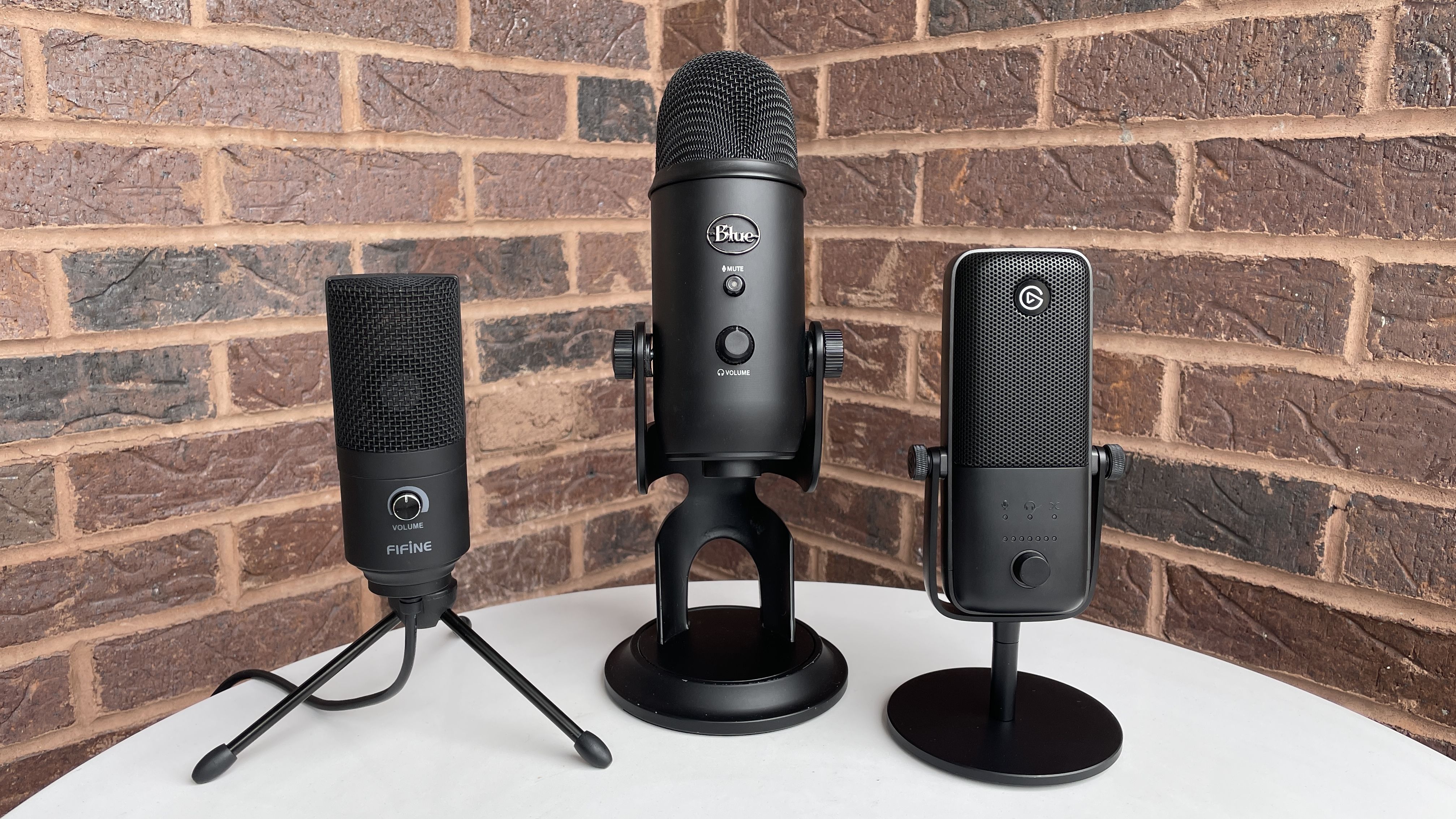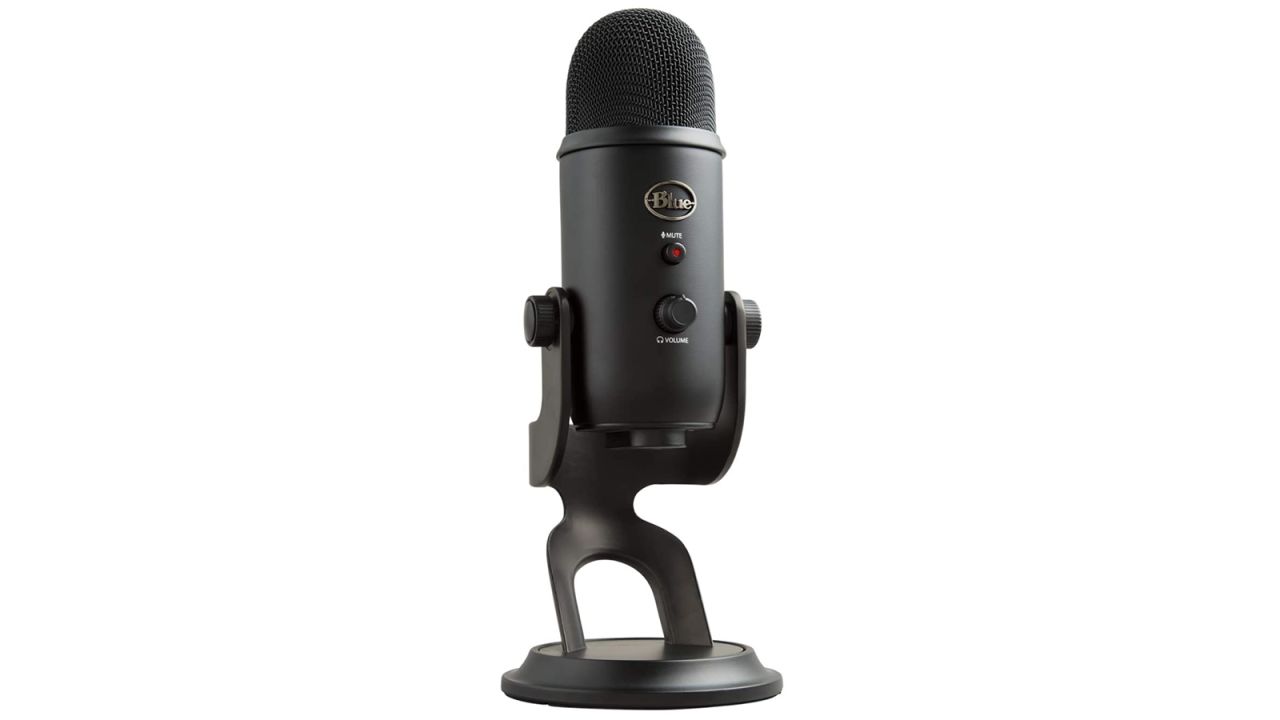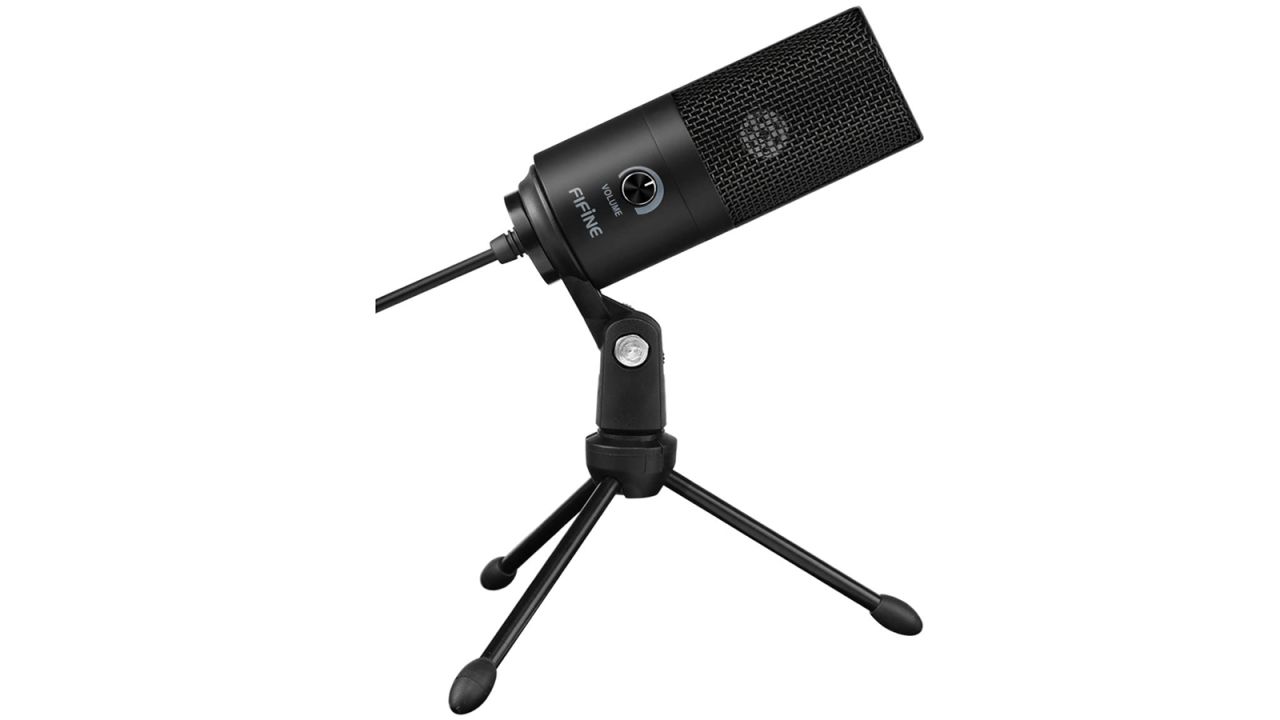Whether you’re looking to start the next great podcast, you’re a serious Twitch streamer or you simply want to sound better on conference calls, having a quality microphone is critical. That’s especially true now that we’re working, playing and creating from home more than ever, as the right mic can make you feel present to others in a way that’s hard to replicate over a Zoom call.
There are a ton of popular USB microphones to choose from, and sorting through the mess of entry-level and professional-grade mics out there can get overwhelming. That’s where we come in. We spent weeks testing more than a dozen top-rated microphones to figure out which ones are actually worth your money, whether you want something affordable for your home office or a high-end mic for leveling up your livestream game. Here are the three that stood out the most:
The Blue Yeti managed to outclass the other mics we tested, with the best combination of sound quality and features for the money. It produced warm, natural-sounding voice recordings complete with handy onboard controls and four useful recording modes.
The FIFINE K669B is a ridiculously good value. This $35 model outshined rivals nearly twice the price, thanks to superior controls, flexible design and impressive volume and clarity. In terms of sheer value, this small but mighty microphone can’t be beat.
For serious Twitch streamers, the Elgato Wave:3 is made for you. On top of being one of the best-sounding mics we tested, the Wave:3 has an excellent companion app that makes it easy to manage multiple audio sources when broadcasting out to the world.
Best overall microphone: Blue Yeti
$130 $100 at Amazon
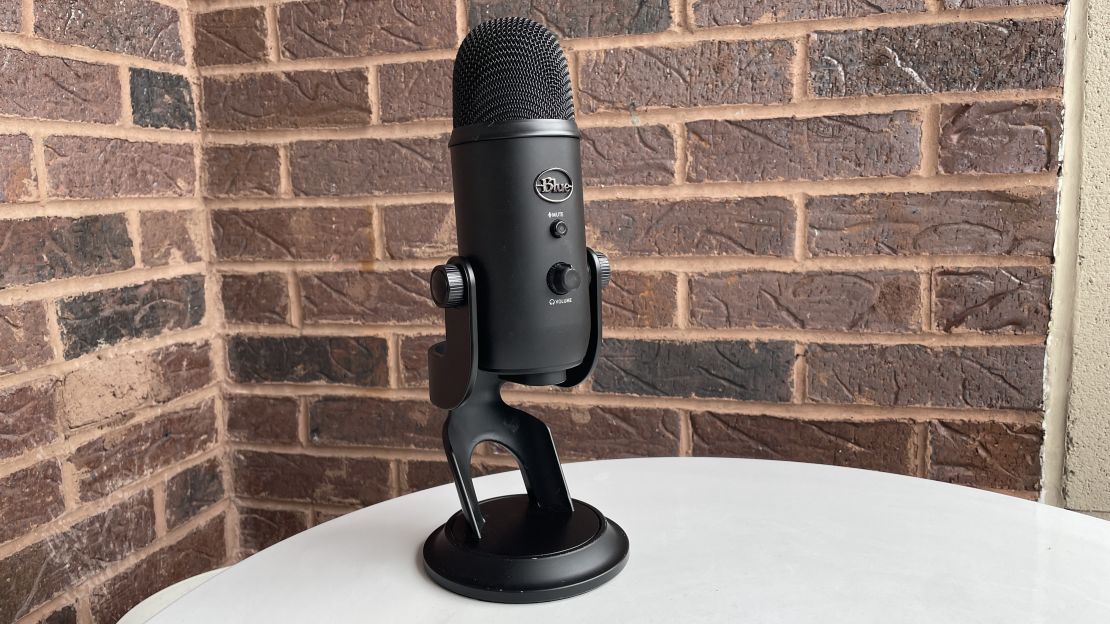
The Blue Yeti has been largely considered the gold standard in USB microphones for more than a decade, and our testing made it easy to see why. This popular microphone has been our personal daily driver for years, and still held up against newer and more expensive mics in terms of sheer audio quality.
The Yeti consistently delivered warm, bright voice recordings, preserving every detail of our voice without any distortion or crackling. It sounded nearly identical to its more expensive sibling (the $169 Yeti X, which offers more sound customization and LED lighting), and was just a bit richer and crisper than premium rivals like the HyperX QuadCast S.
Blue’s mic also performed fairly well on our noise tests. While we could hear sounds such as controller clicks, keyboard strokes and YouTube videos coming through with the gain (which determines how much sound gets picked up) set to 50%, the Yeti pulled in far less background noise than our budget pick in the FIFINE K669B as well as the QuadCast.
Part of what makes the Yeti our favorite microphone is its versatility, as it offers four distinct sound modes: cardioid (for recording a single person, ideal for calling into a meeting or podcasting/streaming by yourself), bidirectional (for recording one person on either side of the mic, ideal for multi-person podcasts), omnidirectional (for recording in every direction, ideal for conference calls) and stereo (for recording a wide soundstage, ideal for music).
All of these modes worked well in our testing. Cardioid offered the crispest, most focused sound, while bidirectional mode picked our voice up equally well whether we recorded from the front or back of the mic. Likewise, omnidirectional mode recorded us well from every angle, but our voice sounded like it was notably farther away than on the other modes. Finally, stereo mode worked as advertised — when we listened back on our recordings with headphones on, it was easy to pinpoint which sounds were recorded from the left and the right sides of the microphone, respectively.
The Blue Yeti also boasts some of the best build quality of any mic we tested, with an elegant, understated design that comes in a variety of colors and won’t stick out like a sore thumb in your home office (we tested the sleek all-black version, but there are also attractive silver and blue options available). More importantly, the Yeti feels weighty and sturdy, with a solid metal frame and a rubberized stand that sat securely on our desk for weeks on end. And if you want to attach the Yeti to a separate stand or arm, all it takes is unscrewing two knobs located on the side of the microphone.
The Yeti is pretty intuitive when it comes to controls, with a handy mute button right up front for when you need to go silent during a meeting as well as a volume knob for adjusting your PC volume when you have headphones plugged in. In the back, you’ll find a gain knob for adjusting how much of your voice gets picked up and a knob for switching between the Yeti’s four recording modes. While we’d love the option to adjust gain from the front of the mic (like the Yeti X offers), the Blue Yeti generally puts a good amount of easy-to-use buttons and knobs at your fingertips.
The Yeti can be used with Blue’s Sherpa software (which is a free download for Windows and Mac), though it mostly provides the same controls you’ll find directly on the microphone. You can adjust the gain and headphone level here just as you can on the mic, though there is a useful extra option to tweak the direct monitoring level — this determines how much of your own voice you’ll hear while speaking. While Blue’s app is fairly straightforward to use, it’s not integral to getting the most out of the Yeti, and we found it easier to adjust the microphone using its built-in physical controls.
After testing the Yeti against the competition, it’s easy to see why Blue’s microphone has withstood the test of time and remained a favorite among content creators and everyday users alike. The Yeti’s sound quality will make you sound professional and vibrant during important work calls and presentations while being rich enough for high-quality podcasts, YouTube videos and Twitch streams. It also sounds better than some microphones that cost significantly more. Factor in its multiple recording modes, useful controls and sturdy, versatile design, and you’ve got the best overall microphone for the money.
Best budget microphone: FIFINE K669B
$35 $24 at Amazon
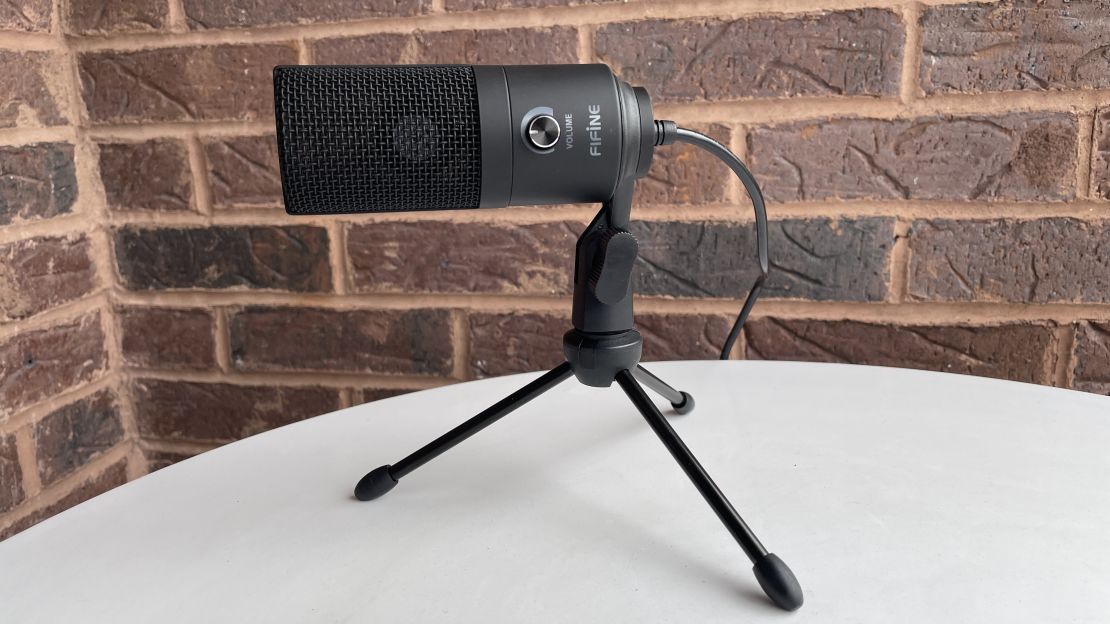
FIFINE isn’t exactly a household name in the world of USB microphones, but we have a feeling that won’t be the case for long. The FIFINE K669B is a true hidden gem at just $35, upsetting many of the more expensive and big-name microphones in our testing pool and delivering very impressive sound quality that punches way above its low price.
FIFINE’s microphone produced lively and natural-sounding voice recordings in our tests, beating out pricier entry-level options like the $59 HyperX SoloCast and $49 Razer Seiren Mini in terms of sheer volume. Our voice sounded just a bit more refined on the SoloCast, but you’re sacrificing very little — and getting a louder mic — with the K669B. FIFINE’s microphone also delivered much louder and more detailed recordings than the fairly tinny built-in microphone on our MacBook Pro, so you’re getting a big upgrade for work calls for just $35.
When testing the K669B against the Blue Yeti with both mics set to half gain, it immediately becomes clear what you’re giving up by paying a fraction of the price. While FIFINE’s mic offered more overall volume, the Yeti delivered significantly crisper, more true-to-life recordings that were devoid of the windy background noises picked up by the K669B.
Fortunately, we were able to make the K669B sound clearer (at the expense of slightly lower volume) by turning the gain down using the front-facing knob, which is a level of control that microphones that cost nearly twice the price don’t even offer.
Thanks to the volume knob up front, you can adjust how much of your voice gets picked up or turn it all the way down to mute yourself. This seemingly minor feature sets the K669B apart from the budget competition — the Razer Seiren Mini has no controls at all, and the HyperX SoloCast has only a mute button.
The K669B also outclasses many pricier microphones with its surprisingly versatile metal design, which feels like something that costs much more than $35. Its highly adjustable pivot mount lets you swivel the microphone a full 360 degrees side to side, or position it horizontally if you need to fit it below your monitor. This makes the K669B more flexible than the SoloCast, the Seiren Mini and even semi-premium mics like the $99 Blue Yeti Nano.
Its attached tripod stand is also a cinch to twist off for when you want to attach the K669B to an arm or toss it in your bag when you’re on the go (which is a good thing, as FIFINE’s mic is one of the most compact we’ve tested). Our one gripe with the K669B’s design is that its tripod legs are pretty wide when fully stretched out and not easy to articulate, so you’ll need to clear a decent radius on your desk to make proper space for it.
So what else are you sacrificing for the K669B’s incredibly low price? Not a whole lot, actually. This mic only records in cardioid mode, so it’s not ideal for multiperson podcasts or large conference calls like the Yeti is. There’s also no companion software, which is common for cheaper mics but worth noting for those who want the option to fine-tune how their voice sounds on their computer.
But, ultimately, those are very minor trade-offs for what’s easily the best budget microphone we’ve tested. Don’t let the lack of a big name brand fool you — the FIFINE K669B is the real deal.
Best microphone for streaming: Elgato Wave:3
$150 $130 at Amazon
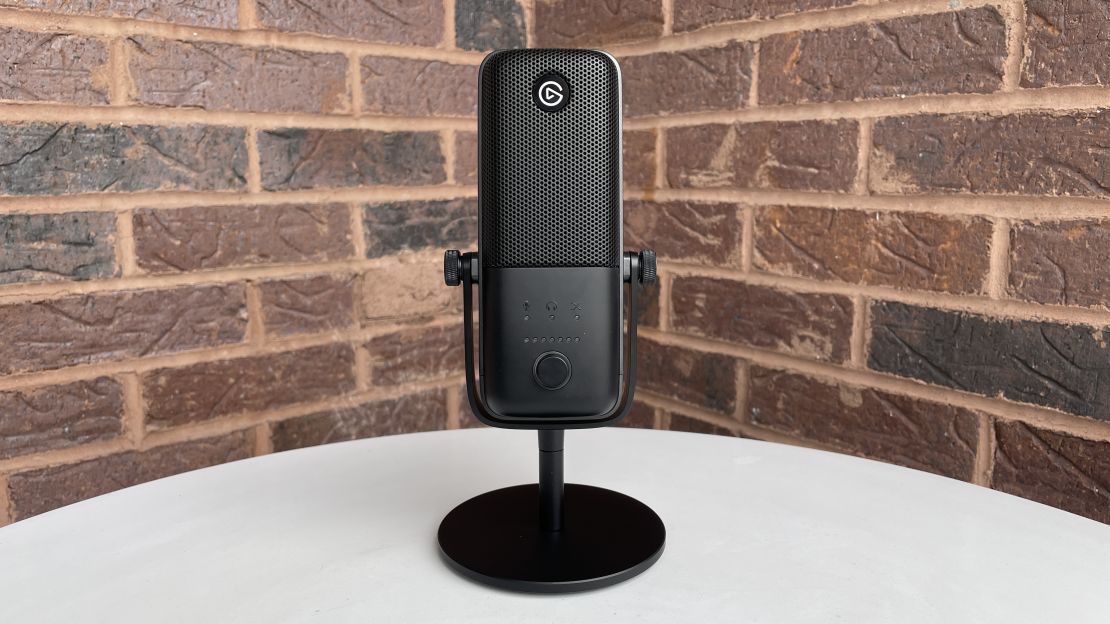
If you’re a YouTube or Twitch streamer looking for a microphone custom-made for broadcasting, the Elgato Wave:3 is worth the premium. On top of sounding and looking great, this microphone offers content creators a level of audio control that no other model we tested could match.
The Wave:3 really comes to life with Elgato’s Wave Link companion software, which is exclusive to Elgato microphones and offers up a one-stop shop for managing multiple audio sources while streaming. So, if you have a game, some background music, your Discord chat and your own microphone all running at once, Wave Link provides an easy way to monitor and adjust the volume levels of all of them and then feed that all into your streaming app of choice.
Wave Link comes with a bit of a learning curve — you’ll essentially have to sync up the app with your computer’s sound settings and decide what audio sources (such as a Chrome browser, your Spotify app and a game) you want to pull in. But after watching a brief tutorial from Elgato, we were adjusting sound levels on the fly within minutes. Without this app, adjusting audio levels on your stream typically requires an expensive mixing board (such as the $249 GoXLR Mini) or a lot of tedious clicking around in your streaming software, so it really is a game changer for those serious about Twitch.
That fine level of control extends to the microphone itself, which has a convenient volume knob that doubles as a button you can press to switch between three functions: microphone volume, headphone volume and adjusting the mix between your voice and your PC audio for your viewers. That latter feature is another perk that no other microphone we tested offers, making it incredibly easy to make on-the-fly adjustments if your voice or game sound is too loud. There’s also a handy tap-to-mute button neatly hidden at the top of the microphone, which will make the front-facing LED glow red to let you know you’re being silenced.
Of course, all these fancy features are useless if your microphone doesn’t sound great, so we’re happy to report that the Wave:3 excels with flying colors when it comes to audio. Our voice recordings sounded crisp and full, and nearly identical in quality to the Wave:3’s premium rival in the HyperX Quadcast S. The Blue Yeti and Blue Yeti X produced warmer, bassier vocals by comparison, while the Wave:3 delivered overall cleaner recordings with less audible background noise.
The Wave:3 is also one of the more compact and attractive microphones we tested, with a unique slim-rectangle design that blended right into our home office setup. Elgato’s microphone is very easy to disassemble, in case you want to unscrew it from its base to attach it to standard microphone arms (there’s an included adapter for fitting it into different sized mounts). You can also remove the microphone from its U-shaped bracket to attach it to Elgato’s $39 Wave Shock mount, which is designed to minimize noise from accidental bumps and knocks.
Our one gripe with the Wave:3’s design is that the included USB-C cable connects to it at a slightly awkward angle that makes it hard to tilt the microphone all the way back. This is something we were able to easily get around by unplugging the cable, repositioning the mic and plugging it back in, but it does make the Wave:3 just a bit less flexible than other mics we tested.
It’s worth noting that the Wave:3 only records in cardioid mode (directly in front), making it less of a jack of all trades like the Blue Yeti and more of a microphone with a laser focus on streamers. But if that’s your niche, Elgato’s mic will serve you better than any we’ve tested, offering superb sound and a level of audio control that would otherwise require you to buy a pricey mixing board.
How we tested
Since microphones are designed for both everyday use and serious content creation, we evaluated every mic in our pool using a mix of anecdotal testing and in-depth audio comparisons.
To evaluate audio quality, we recorded clips of ourselves talking into each microphone using Audacity. We placed each mic at the same point on our desk for each recording (roughly 8 inches from our mouth) and set the gain (which determines how much of your voice gets picked up) to 50% for microphones that allowed us to toggle it.
When testing microphones that offered multiple recording modes (such as cardioid and omnidirectional), we made voice recordings on each setting. We also performed a noise test, measuring how much background noise each microphone picked up while a YouTube video of ambient airport noise played on our speakers.
We evaluated the physical design of each of these microphones, noting how easy they were to adjust or disassemble for when it’s time to take them on the go or place them on a mounting arm. We also tested the companion software for every microphone that offered it, taking note of how intuitive each one was to use and how useful the features were. Additionally, we used each microphone on both a Windows 10 desktop as well as a MacBook Pro to see how each functioned on both major operating systems.
Finally, we used these microphones in everyday scenarios, such as conference calls and Twitch streams, to see how they stacked up in the real world. We also sent sound recordings to two colleagues to get a fresh set of ears on our comparison tests.
How we rated
Here’s how our scoring broke down when testing to find the best microphones:
- Sound quality had a maximum of 40 points: overall quality (30 points) and noise isolation (10 points).
- Design had a total of 30 points: build quality (10 points), controls (10 points), portability (5 points) and adjustability/mounting options (5 points).
- Features had a total of 20 points: recording modes (10 points) and companion software (10 points).
- Compatibility had a total of 5 points: overall (5 points).
- Warranty had a total of 5 points: overall (5 points).
Other microphones we tested
Tonor TC30 USB Microphone
$30 at Amazon
An extremely close runner-up in the budget category, the Tonor TC30 is easily one of the best microphones you can buy for less than $30. This mic offers great sound quality for the money, a versatile and high-quality design and an included pop filter for eliminating unwanted crackles — something you won’t even get on the most expensive mics we tested. While the Tonor nearly dethroned our current affordable favorite in the FIFINE K669B, it’s held back by a lack of onboard controls, and the FIFINE offers slightly more natural-sounding recordings. Still, if you’re looking to spend as little as possible on a microphone (we’ve seen the TC30 drop to as low as $15 with coupons), this Tonor mic is well worth considering.
HyperX SoloCast
$60 $50 at Best Buy
A close contender to our budget throne, the HyperX SoloCast offers great sound, a highly adjustable design and mute button — all features that are hard to find in a sub-$60 mic. However, the FIFINE K669B’s slightly better audio and much cheaper price gave it the edge.
HyperX Quadcast S
$160 $130 at Amazon
Another great microphone that nearly made our list, the HyperX Quadcast S delivers excellent sound, four recording modes and striking RGB lighting that you can customize to match your setup. It’s a great pick for those who value looks as much as audio quality. But serious streamers will get more flexibility out of the Elgato Wave:3, and the Blue Yeti sounds just as good and offers better controls for less. The Quadcast S is a little hard to find as of this writing, but you can also opt for the regular $139 HyperX Quadcast, which is essentially the same microphone without RGB lighting.
Blue Snowball
$70 $40 at Amazon
The Blue Snowball offers good sound quality for the price, and multiple recording modes ideal for both solo and multiperson sessions. However, its top-heavy design is a bit unwieldy, and you can get comparable audio quality from even cheaper mics.
Blue Snowball iCE
$50 at Amazon
A streamlined version of the Snowball, the Snowball Ice offers a single recording mode and a more compact design. And it also sounds great — but other budget microphones, such as the HyperX SoloCast and FIFINE K669B, offer a little more for the money.
Blue Yeti Nano
$100 $80 at Amazon
The Blue Yeti Nano is a cheaper and more compact version of the Blue Yeti, our favorite overall microphone, that makes surprisingly few sacrifices. You’ll get similarly great audio quality and a more portable design, but you also get only two recording modes instead of four, making the Nano less versatile than its bigger brother.
Blue Yeti X
$170 $140 at Amazon
Whereas the Yeti Nano is a simplified version of the Yeti, the Blue Yeti X takes things into overdrive. This premium take on the Yeti ups the ante with onboard LED lights for monitoring your voice and keeping track of your active recording modes as well as customizable vocal effects via its companion app. Those are great bonuses for serious podcasters and streamers, but most folks will be just fine with the standard Yeti.
Razer Seiren Mini
$50 at Razer
If we had a “most adorable” award, the Razer Seiren Mini would win it. This pint-size mic is both portable and attractive (especially in the white and pink color options) and does a nice job isolating noise. However, its voice pickup was a bit too low in volume compared to its budget rivals.
Razer Seiren X
$100 $80 at Razer
The Razer Seiren X is a solid option in the sub-$100 price range, with decent sound and a sleek, compact design that’s easy to disassemble and toss in a bag. However, it’s not quite up to snuff with $99 competitors such as the Blue Yeti Nano and Shure MV5C in terms of audio quality and features.
Shure MV5C
$79 at Amazon
The Shure MV5C serves up crisp audio quality and a handy speech boosting mode within one of the more travel-friendly designs we tested. However, its compact build makes it a bit awkward to use, especially with all of its controls tucked onto the back.
Shure MV7
$245 at Amazon
The Shure MV7 is a great podcasting microphone for professionals — and professionals only. This mic has some of the warmest, richest voice quality of any we tested, but it also costs a hefty $249. But what really stings is that there’s no included stand or mount, making this already expensive mic an even bigger investment if you want to use it properly.
